2022 Kansas Wheat Crop Conditions: a report following the Wheat Quality Tour
The 2022 Wheat Quality Tour took place May 16 - 19, 2022. About 85 people actively scouted hundreds of Kansas wheat fields in 21 groups spread across six routes (Fig. 1). The groups left Manhattan and headed to Colby on day 1, from Colby to Wichita on day 2, and finally from Wichita to Manhattan on day 3.
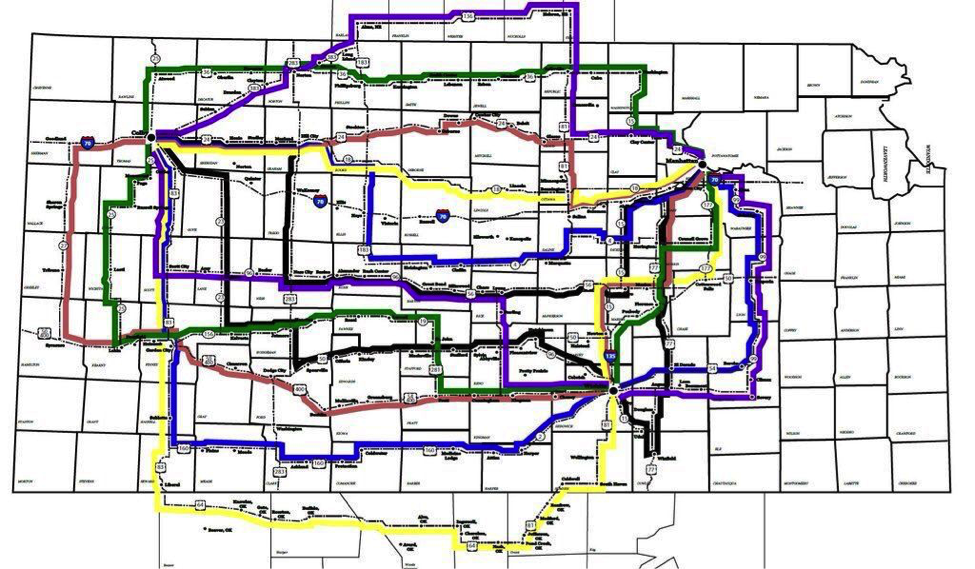
Figure 1. Representation of the six routes (purple, green, pink, yellow, blue, and black) explored during the wheat quality tour. Image courtesy of Wheat Quality Council.
The Kansas wheat crop is currently facing many challenges. Consequently, the overall 2022 production estimate for Kansas resulting from the tour was 261 million bushels of wheat, compared to 364 million bushels estimated by the tour in 2021. Weather conditions during the next 2-3 weeks will be crucial in determining where the final production will actually land. Challenges the 2022 wheat crop has encountered to date include drought stress, heat stress, delayed early spring development, and freeze damage.
Drought stress
Several wheat fields sampled in the western portion of the state (west of a line from Smith to Pratt counties) were showing severe symptoms of drought stress (Fig. 2). These symptoms included current drought stress (younger leaves curled, abortion of older leaves, and yellowing of lower canopy), and long-term drought stress (extremely reduced plant height and biomass, and delayed development). Many of the sampled fields were well into the reproductive stages of development, such as flowering and grain elongation, and were only 9-12 inches tall due to the prolonged stress (Fig. 2). The lack of growth will not only reduce the crop’s yield potential, but also create difficulties during harvest.
For fields under these conditions, yield estimates of 10-20 bushels per acre were common. The conditions deteriorated as the group moved from northwest to southwest Kansas, where drought stress has been more severe (Fig. 3). Precipitation within the next few days is essential to improve crop conditions and ensure some level of harvestable grain yield. If no rain occurs in the next few days, producers will have to face the decision of whether to harvest a crop with extremely limited yield potential or to terminate the crop and switch to a summer crop.
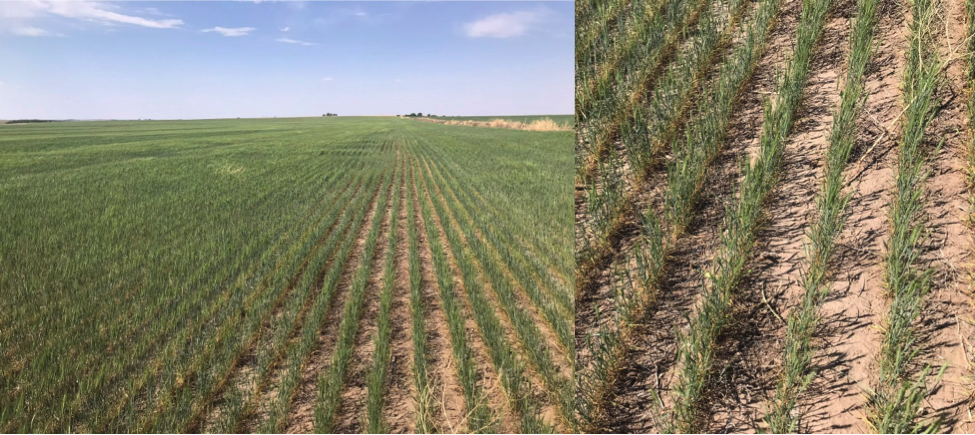
Figure 2. Drought stressed wheat fields in Norton county, Kansas. Symptoms include decreased crop biomass production and height, curled leaves, abortion of older leaves, and yellowing of lower canopy. Photos taken by Romulo Lollato, K-State Research and Extension.

Figure 3. Drought stressed wheat fields in Kearney county, Kansas. Symptoms are similar to those in the photos above: decreased crop biomass production and height, curled leaves, abortion of older leaves, and yellowing of lower canopy. Photos taken by Romulo Lollato, K-State Research and Extension.
Heat stress
The second largest concern affecting the 2022 winter wheat crop in Kansas is heat stress. Many fields in the southern portion of the state were showing signs of heat stress, such as scorched white heads (Fig. 4). Heat stress interacts with drought stress and thus the symptoms tended to be worst in southwest Kansas. However, the poor conditions resulting from the combination of heat and drought stresses extended as far east as Pratt and Kingman counties.
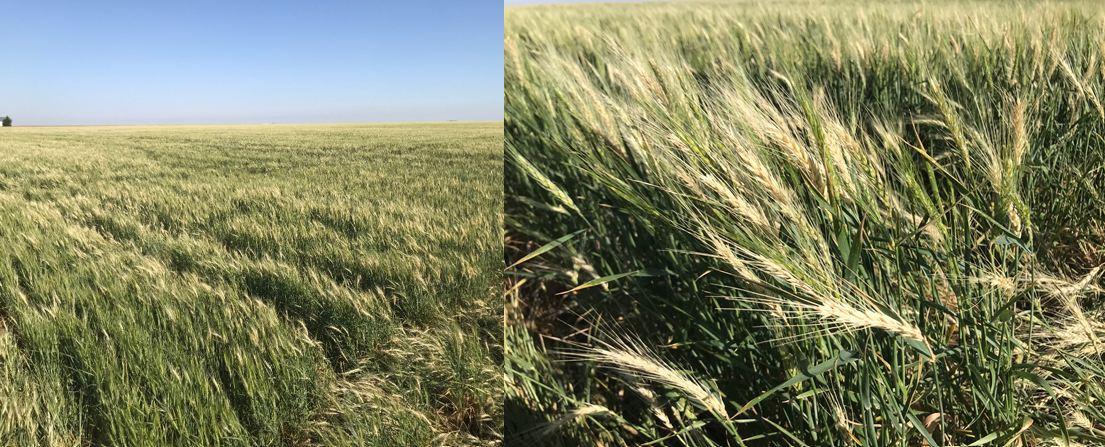
Figure 4. Field in southwest Kansas showing signs of head scorching likely due to heat stress. Photos taken by Romulo Lollato, K-State Research and Extension.
Delayed early spring development followed by accelerated reproductive development
The months of January through March 2022 were cooler than average (Fig. 5) consequently delaying crop development. For instance, in previous years of the wheat tour, stages of crop development around the state ranged from early grain fill in south central Kansas to boot stage in northwest Kansas, and the tour used to be conducted in the first week of May, two weeks prior to this year’s tour. This year, in the third week of May, the furthest along fields sampled were in the milk stages of development in south central Kansas, and the majority of wheat in northwest Kansas is just now heading.
The first consequence of this delayed development has been a shortened period of reproductive development, as the crop went through stem elongation in a matter of just a few days. In terms of grain yield, the impacts of the delayed development will depend on the weather conditions during the remainder of May and June. If conditions are cool and moist, the crop might still go through favorable grain fill conditions and produce a decent test weight and fulfill whatever potential is still present.
However, if temperatures are normal or above normal and precipitation is below normal, the crop will go through grain fill during warmer conditions. This can severely limit grain yield. Drought and heat stress during grain fill limit the photosynthetic production of sugars and decrease the accumulation of starch in the grain, reducing grain test weight and grain yield, consequently increasing the percent protein in the grain.
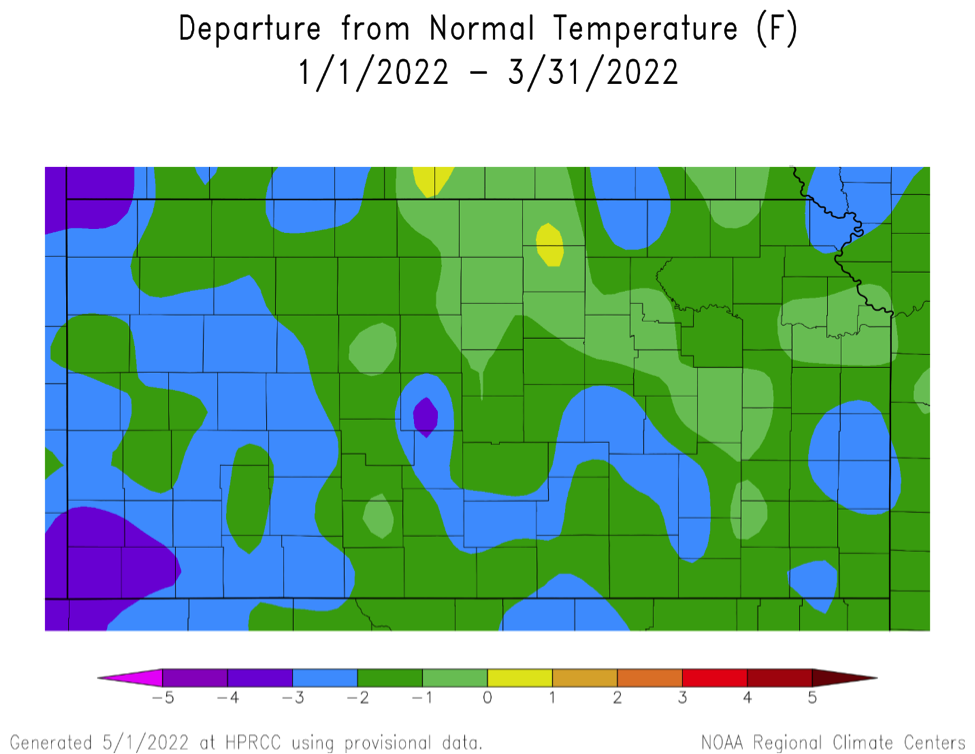
Figure 5. Departure from normal mean temperature during the months of January, February, and March 2022.
Freeze damage
The majority of the state is showing symptoms of freeze damage, not only in the leaves but also to the heads (Fig. 6). Burnback of leaf tissue resulting from a freeze should be mostly cosmetic and not result in yield reduction, but damage to the heads can reduce yield potential. Freeze injury seems to be widespread across the state, but with fairly low within-field incidence of damaged heads. If the crop has enough moisture from here onwards, it should help compensate for the lost tillers and yield reductions from this problem might be minimal. If the crop has been severely damaged by freeze, yield losses might be severe enough to justify no further investment in the crop.
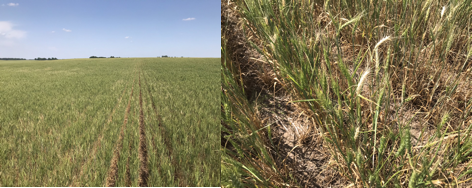
Figure 6. White heads showing symptoms of freeze damage to wheat field in Pratt County, Kansas. Photos by Romulo Lollato, Extension Wheat Specialist with Kansas State University.
Summary
The above factors are a few of the major challenges that the 2022 Kansas wheat crop is currently facing. While each of those factors could restrict wheat yields to a certain extent, the largest uncertainty when estimating wheat production at the state level at this time of year is the weather during grain filling. Although the crop has been severely drought stressed for the majority of the growing season in western and parts of central Kansas, the recent cool and moist conditions during grain fill should help ensure that the current potential of the crop is attained.
Romulo Lollato, Extension Wheat and Forages Specialist
lollato@ksu.edu
Chip Redmond, Weather Data Library, Kansas Mesonet Director
christopherredmond@ksu.edu
Tags: wheat Wheat Quality Tour